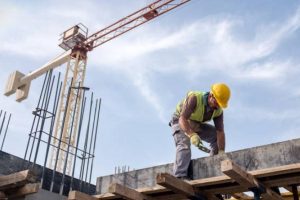Nor does it give details about what will be done with the MEI, but it does confirm that the second phase of the reform will be approved via Royal Decree-Law
November 17 () –
The Minister of Inclusion, Social Security and Migration, José Luis Escrivá, has avoided this Thursday offering figures on how much he wants the maximum bases and the maximum pension to rise in the coming decades because the negotiation with the social agents is still ongoing.
“Talking about figures when we are looking for a convergence on these parameters is clearly premature,” said the minister at the press conference on the affiliation advance in November.
Escrivá responded like this when asked about the publication in the press that the proposal he has made to unions and employers is to raise the maximum contribution base and maximum pension by 30%, plus inflation, within a period of 30 years.
In the case of the Intergenerational Equity Mechanism (MEI), which establishes an overprice of 0.6% until 2032, the newspaper ‘El País’ publishes this Thursday that the Government is considering extending it until 2050, an extreme that the minister has not wanted to confirm either Do not cloud the negotiation.
The CCOO and the UGT have released a statement in which they ensure that the proposal to raise the maximum bases and the maximum pension by 30% in 30 years was already made by the Ministry last year and is only a reflection of its position within the framework of a negotiation in which the proposals of unions and employers will also be taken into account.
In component 30 of the Recovery Plan sent by the Government to Brussels, which refers to the pension reform, the objective of gradually raising the maximum contribution base was already set, accompanied by an adaptation to it of the maximum pension , over 30 years. This measure, as specified in the Plan, will affect all workers and pensioners in the system.
“The adaptation of the system requires a gradual adaptation of the maximum contribution bases that must be concurrent with a modification of the maximum pension so as not to alter the contributory nature of the system. That the evolution of the maximum bases be adapted to a very gradual path and known in advance, it also allows economic agents to adapt adequately”, stated the Government at the time.
Escrivá has defended today that, although it deals with “prolix” issues, his feeling is that this negotiation is not going to be slower than others, but he has recognized that it must “end soon”. “We have to have this closed before the end of the year, that is the goal,” he specified.
For this reason and because it will include elements that require “speed”, the minister has confirmed that this second leg of the pension reform –which will address the evolution of the maximum bases and the calculation period and contribution gaps– will be approved through a Royal Decree-law. “It is the regulatory instrument that we have in mind, and not only to comply with Brussels”, he explained.
THE OVERCOMING OF THE MEI IS “EXTREMELY LOW”
In relation to the MEI, Escrivá has assured that the 0.6% overprice that starts in 2023 is “extremely low and does not change in any case the situation of labor costs of companies.”
In fact, he has indicated that this overpricing will raise the cost per hour worked that companies pay for each worker from 20.9 euros to 21 euros, while the European average is around 26 euros and other countries exceed 30 euros. .
“When we have seen these elements, we have looked very carefully that there are no negative effects on the competitiveness of Spanish companies,” he stated.





![[Img #74664]](https://thelatestnews.world/wp-content/uploads/2024/12/James-Watson-The-controversial-genius-behind-the-double-helix-150x150.jpg)








